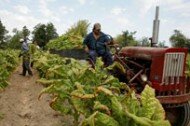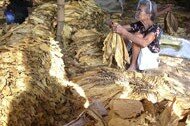In a country where, on an average, three out of 10 people use smokeless tobacco such as gutkha, paan masala, khaini etc, a mere 18 cessation centres offering help to quit the habit is not enough. A Supreme Court order banning smokeless tobacco products is expected on April 13.
At a two-day national consultation in the Capital to discuss the ban and the government’s readiness to implement it, it was recommended that three such counselling centres be set up in every district.
The ministry of health and family welfare (MoHFW), in association with the Public Health Foundation of India (PHFI) and WHO, formulated certain recommendations to successfully implement the ban. “It has to be a progressive ban. It may sound impossible initially, but that was also believed for introducing CNG-run vehicles in Delhi,” said Dr K Srinath Reddy, president, PHFI.
The PHFI is launching a three-month long online course to train healthcare professionals, journalists and law agencies in general tobacco control, creating awareness and enforcing ban.
“Creating awareness is one part of it; we also suggested raising taxes to a level that it hits the demand for chewing tobacco. Government should not provide loans to people involved in tobacco industries and insurance companies should ensure smokers pay higher policy premium than non-smokers,” said Dr Vinayak Mohan Prasad, senior adviser, Tobacco Free Initiative, WHO.
A lot of emphasis was put on inter-ministerial consultation, with health and finance ministries at the forefront. “The first deterrent in implementing the ban is millions of workers going jobless. Market support mechanism is required for such people while deciding alternate crops for them. Soybean has been tested and found to be equally lucrative,” said Dr Monika Arora, head-health promotion and tobacco control, PHFI.

 RSS Feed
RSS Feed Twitter
Twitter



 Posted in
Posted in  Tags:
Tags: 








